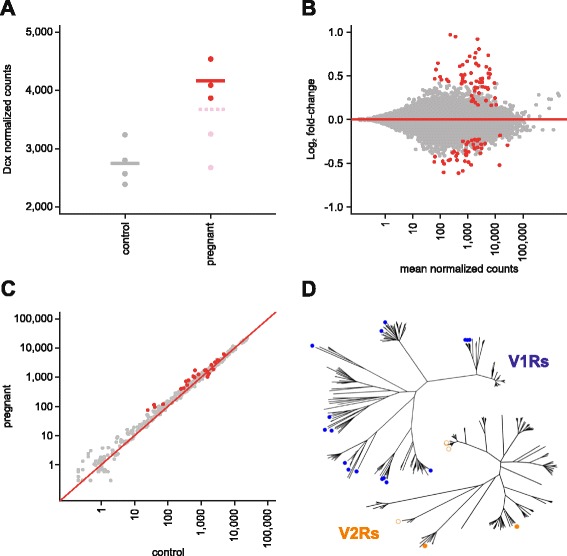Fig. 5.

Pregnancy alters gene expression in the vomeronasal organ (VNO). (a) Doublecortin (Dcx) expression measured by high-throughput RNA-sequencing (RNAseq) in control and pregnant mice. The two pregnant females (pink) that did not display increased Dcx expression compared to controls (grey) were excluded. The three females that displayed increased neurogenesis (red) were used in further analyses. Mean expression values are indicated by horizontal lines; the dotted pink line indicates the mean when all five pregnant mice are included. (b) Differential gene expression of the whole VNO transcriptome of pregnant mice compared to control mice. Statistically significant differentially expressed genes (101, false discovery rate (FDR) <5 %) are highlighted in red. (c) A scatter plot of relative VR gene and pseudogene expression levels (normalized counts) in the pregnant versus the control mice. Statistically significant genes (24, FDR <5 %) are highlighted in red. The red line represents the 1:1 diagonal. Each differentially expressed vomeronasal receptor (VR) gene is detailed in Fig. 7. (d) Phylogenetic trees of all intact V1R and V2R genes, indicating the clades in which differentially expressed VR genes are located (V1Rs, blue; V2Rs, orange). Filled circles indicated VR genes upregulated in pregnant females, open circles indicate VR genes downregulated in pregnant females
